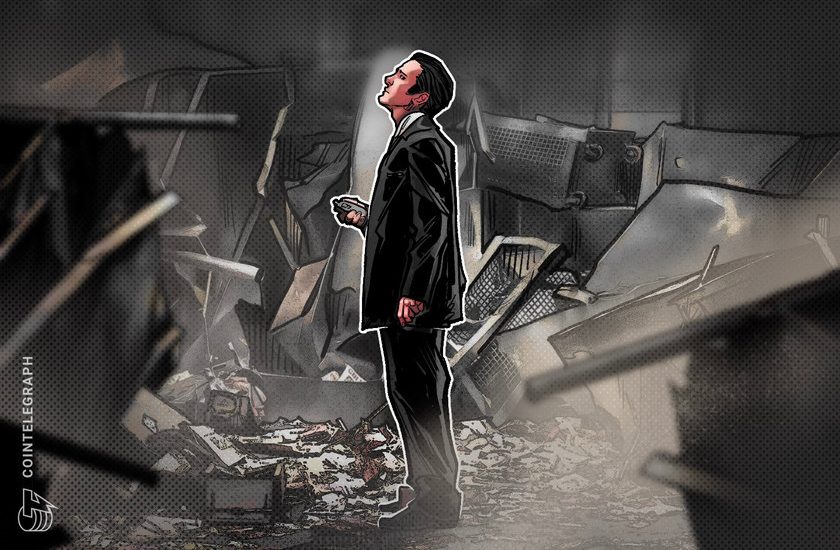- March 15, 2023
- Posted by: admin
- Category: BitCoin, Blockchain, Cryptocurrency, Investments


The fact that most banks aren’t required to keep your money on hand makes it likely that more bank failures will occur in the months ahead.
The Federal Reserve Board reduced banking reserve requirements to zero in March 2020. Since that time, banks in the United States have not been required to actually hold any depositor money in the bank, making a flawed system — fractional reserve banking — worse.
With Silvergate Bank, Silicon Valley Bank and Signature Bank now shuttered, many in the U.S. are wondering if regional banks pose the same risks. Zero reserve policies at the Federal Reserve only make further bank collapses more likely.
Fractional reserve banking and Silicon Valley Bank
Before the pandemic, banks had to hold 10% of deposits in cash. When depositors put $1,000 in the bank, the bank wasn’t required to hold that $1,000. It holds $100 and loans out $900 to customers in search of a mortgage, a car, etc. Banks charge an interest rate on those loans, which is one way in which a bank makes money. So, a bank account holder gets 0.2% interest, while the bank provides loans at 4% and higher.
Fractional reserve banking is what allows a bank to keep a portion of your money in the bank while lending most of it to businesses and consumers. But if every single depositor comes for their $1,000 — as happened in the case of Silicon Valley Bank (SVB) — the bank won’t have the cash on hand. If the bank is at risk of shutting down, then everybody is going to be rushing to get their $1,000 out. When this happened at SVB, the California bank regulator stepped in and put the bank into receivership.
Related: Silicon Valley Bank was the tip of a banking iceberg
The Fed has sowed the seeds of the financial crisis in more ways than zero reserve banking. When the Fed funds rate increases, it affects car loans, housing, U.S. treasuries and makes small business loans more expensive. When the value of treasuries decreases, the yield of treasuries increases. Banks are affected because they have a ton of treasuries on their balance sheets, as in the case of SVB. Banks that fail to hedge their risk go bust.
Is SVB systemic?
Approximately 1,000 startups had their money at Silicon Valley Bank. If the bank failed, all of those startups could have also been wiped out. Major publicly traded companies did have money in SVB, including Roku, which held approximately $487 million — nearly a quarter of its total cash — at the bank.
Only 2.7% of Silicon Valley Bank deposits are less than $250,000. Therefore, 97.3% aren’t Federal Deposit Insurance Corporation (FDIC) insured. The FDIC is an independent federal agency, and banks pay a premium for banking insurance of $250,000 per depositor.
In 2012, Congressman @RonPaul held a hearing titled, “Fractional Reserve Banking and the Federal Reserve: The Economic Consequences of High-Powered Money.”
In this clip, Paul asks Dr. Joseph Salerno about the gold standard and whether fractional reserve banking causes bank runs: pic.twitter.com/HeCwXn9gML
— Liam McCollum (@MLiamMcCollum) March 11, 2023
SVB served startups with millions of dollars. Even though SVB is a regional bank, it’s considered the second largest bank failure in U.S. history after Washington Mutual, with $212 billion on its balance sheet. FDIC insurance would not cover most people, as the agency currently has only around $120 billion on hand.
Over the weekend, we did see some contagion as people lined up at their banks. SVB’s failure could lead to big companies opening up accounts in the Big 4, leading to further centralization of the banking system.
Related: USDC depegged because of Silicon Valley Bank, but it’s not going to default
With thousands of banks in the U.S., many regional banks could be experiencing similar issues to SVB. The best case scenario would have been for a private entity to come in and buy Silicon Valley Bank, making those depositors whole and stopping contagion. That did not happen. How large of a crisis could the Feds stymy without having to print money? Not a very large one — and people know this.
The Fed could slow interest rate hikes
The Fed has been raising interest rates to combat inflation. If the government prints more money to bail out SVB or any banks that may follow, it creates the perfect conditions for inflation. The Fed always breaks the economy when it embarks on a quantitative tightening program in an attempt to bring inflation down. In 2008, mortgage companies gave mortgages to anyone with a pulse, which led to the 2008 financial crisis. Those were the first domino to fall.
With SVB depositors basically getting a bailout, the U.S. is essentially using a band-aid to plug a hole in the boat. If many regional banks have similar problems to SVB, the Fed will have to begin another episode of quantitative easing, which could bring inflation roaring back.
The U.S. is at the onset of a major inflationary scenario. The Federal Reserve is the emperor, and the emperor is wearing no clothes. If it continues to raise interest rates as a means of fighting inflation, more cracks in the U.S. economy will spring up. If it stops raising interest rates and even lowers them eventually, the vector of inflation could creep back into everyday life.
This article is for general information purposes and is not intended to be and should not be taken as legal or investment advice. The views, thoughts, and opinions expressed here are the author’s alone and do not necessarily reflect or represent the views and opinions of Cointelegraph.
